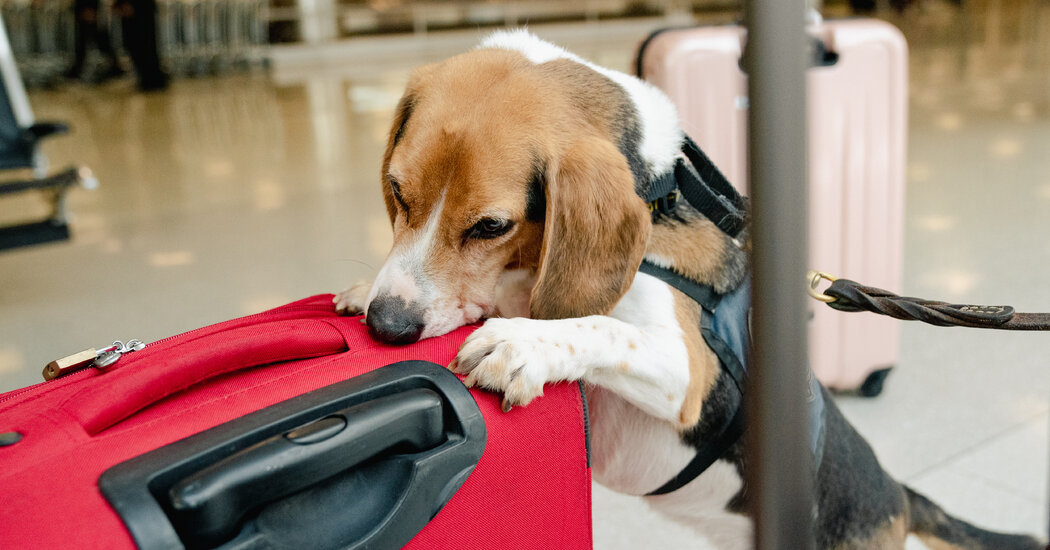DULLES, Va. — As a throng of travelers at Dulles International Airport elbowed their way to the baggage carousel on a recent sweltering afternoon, a federal officer zeroed in on a tired woman, sniffed her suitcases and sat down.
Hair-E, a six-year veteran at Dulles and a honey-colored beagle, glanced knowingly at his human handler, Don Polliard.
“Do you have any meat or fresh vegetables or fruit in that bag?” Mr. Polliard, an agriculture specialist for Customs and Border Protection, asked the passenger.
Yes, she reluctantly conceded. Contraband, just as Hair-E suspected. As Mr. Polliard instructed the traveler and her husband to take their many bags and go through a secondary round of inspections, Hair-E lurched toward a red plastic bag a carousel away, already following the lure of the next scent.
As a member of the government’s Beagle Brigade, Hair-E is one of 180 hounds deployed at airports, border crossings and postal depots across the country. Clad in blue vests emblazoned with government logos, they roam airport corridors to detect and intercept prohibited foods or plants that could carry diseases and wreak economic and ecological havoc on American agriculture. And with international travel returning to prepandemic levels, Hair-E and his colleagues are seizing an increasing number of goods outlawed from entering American soil.
Typical recruits are young rescues that complete up to 13 weeks of training at a center in Atlanta, where they learn to discern five basic odors: apple, citrus, mango, pork and beef. Their time in the field naturally expands their olfactory repertoire. About three-quarters of the dogs graduate from the program and are then placed at ports of entry. After a few years of service, members of the brigade retire at about 9 or 10 years old, when they are often adopted by their handlers.
Unassuming in size, friendly in nature and renowned for their sense of smell, beagles are preferred to patrol baggage carousels while larger breeds like labradors sniff out docks and cargo facilities.
“Beagles are generally not intimidating at all, and people are usually pretty happy to see them,” said Sara Milbrandt, a regional agricultural canine adviser for Customs and Border Protection who worked as a handler for 15 years.
Of course, few travelers are thrilled when their carefully hidden delicacies are unearthed, even if the detection comes with a wagging tail. But neither the dogs nor their handlers are swiping the confiscated food….
Click Here to Read the Full Original Article at NYT > Travel…
